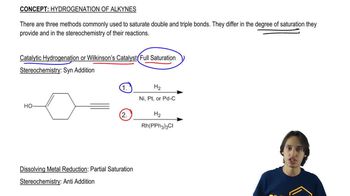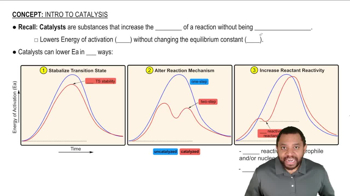Answer Problem 39, parts a–h, using 2-butyne as the starting material instead of propyne.
h. H2/Lindlar catalyst

 Verified step by step guidance
Verified step by step guidance Verified video answer for a similar problem:
Verified video answer for a similar problem:



 0:48m
0:48mMaster The definition of hydrogenation. with a bite sized video explanation from Johnny
Start learning